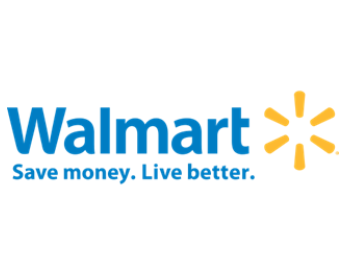Targets
12.1) Implement the 10-Year framework of programmes on sustainable consumption and production, all countries taking action, with developed countries taking the lead, taking into account the development and capabilities of developing countries
12.2) By 2030, achieve sustainable management and efficient use of natural resources
Intel
Intel has made significant investments and set goals to reduce the environmental footprint of our global manufacturing operations. We will work toward achieving our 2030 sustainability goals, investing in water and energy conservation, renewable energy, and circular waste management. We will also take actions with others to collectively expand the technology “handprint”—transforming product energy use and design and applying technology to reduce computing-related climate impacts across the rest of the global economy to achieve carbon neutral computing.
Novozymes
Novozymes' biosolutions enable the biobased economy and help customers to produce more with less enabling sustainable consumption and production patterns as its products reduce energy, raw material and chemical consumption and CO2 emissions, compared with conventional technologies. Novozymes has conducted a large number of lifecycle assessment studies (LCA) to document the environmental benefits of biological technologies over conventional technologies. In 2019, customers saved an estimated 87 million tons of CO2 emissions by applying Novozymes’ products. The savings achieved are equivalent to taking approximately 36 million off the road. Novozymes’ 2022 targets for the world are to save 60 million tons of CO2 by enabling low-carbon fuels in the transport sector, reach >4 billion people by providing laundry solutions that replace chemicals and gain 500,000 tons of food by improving efficiency from farm to table. In its operations, Novozymes has set goals to reduce absolute CO2 emissions from operations by 40% (compared to 2018 baseline), develop context-based water management programs at 100% of their sites, achieve 100% circular management of their biomass and develop plans for circular management of 100% of key packaging materials by 2022.
12.3) By 2030, halve per capita global food waste at the retail and consumer levels, and reduce food losses along production and supply chains, including post-harvest losses
Dupont
DuPont is innovating along the food value chain to reduce global food waste. For example: DuPont Industrial Biosciences has developed a range of DuPont™ Danisco® enzymes that help reduce food waste from baked goods. Approximately 30 percent of bakery products go uneaten, often because they are considered to have gone bad or stale. DuPont’s enzymes can extend product freshness. The longer an item stays on the shelf, the more likely it is to be eaten, the more efficiently we are consuming the food intended for our tables. Working with Cargloux, DuPont developed DuPont™ Tyvek® Air Cargo covers to help protect perishables and reduce food waste during transit, keeping goods up to 15.4 degrees cooler in a hot environment. DuPont and Cargolux have combined their knowledge and expertise to reduce one of the key causes of food waste, ensuring that fresh food products are now available to emerging markets in Africa, opening new horizons and creating new opportunities.
S Group
To make a difference, it is important to get all the S Group’s co-op members to consume responsibly. The S Group aims to make this easier by providing different solutions. For example, Finns eat too much meat and too little vegetables. As a solution to this, the S Group launched the ‘Satokausituotteet’ (Seasonal produce of the month) concept. The concept provides consumers with a more extensive range of vegetables of the season in question, with the best value. The seasonal produce increased the sale of vegetables at S Group’s stores by 12 million kilograms from the previous year. One of S Group’s solutions for tackling food waste, contributing to circular economy, and reducing our customers’ carbon footprint is E85 fuel offered at our gas stations. E85 contains 80–85 % of bioethanol and over 100 S Group’s outlets direct its food waste (inedible) as raw material for the production of bioethanol. The carbon dioxide emissions of E85 during its life cycle are up to 80 per cent lower than those of fossil fuels.
Cargill
Cargill is committed to addressing food loss and waste to ensure global food security and a sustainable future. We are well-positioned to make a real impact on this complex issue given our global supply chain from farm to fork and our relevant technical expertise.
For example, we work with national food banks in 18 countries to address hunger, food waste, food safety and other issues. We also participate in the Food Reform for Sustainability and Health (FReSH) initiative, led by EAT and the World Business Council for Sustainable Development, which brings businesses together to drive progress across the value chain.
We are working with World Resources Institute to create and deploy an accounting system toolkit to reduce food loss and waste by setting reduction targets, creating measurement and reporting processes, and creating internal and external awareness.
12.4) By 2020, achieve environmentally sound management of chemicals and all wastes throughout their life cycle in accordance with agreed international frameworks, and significantly reduce their release to air, water and soil to minimize their adverse impacts on human health and the environment
croplife international
CropLife International is committed to the UN’s Strategic Approach to International Chemicals Management (SAICM). Our members view their contribution to the implementation of SAICM as an opportunity to improve the sustainable use and effective management of pesticides, and to communicate about their critical importance for the delivery of the SDG 12.4. For example, since 2005 the crop protection industry has collected and safely disposed and recycled 781,000 tons of plastic pesticide containers across 58 country schemes. In addition, CropLife International partnered with national governments, FAO, World Bank and various NGOs in the Africa Stockpiles Programme, established in 2005, to remove 8,000 tonnes of obsolete pesticides from the African continent. A new phase of the project (2019-2025) will have a core focus on prevention of obsolete stocks, as well as managing existing stocks.
Bechtel
Setting new standards at Crossrail in the UK: With more than 250 machines spread across nearly 40 construction sites, Bechtel and Crossrail achieved an 85 percent reduction in particulate emissions on Europe’s largest construction project. Moreover, Crossrail was recognized as the first infrastructure project in the United Kingdom to adopt strict emissions controls across all of its work sites. It has also introduced newer, cleaner machines across London and encouraged suppliers to upgrade their equipment. The success of this program on Crossrail has helped to support the Greater London Authority’s intent for a wide scale introduction of these controls.
Ericsson
Ericsson offers free product take-back services in efforts to reduce waste from electrical and electronic equipment (WEEE). Since 2005, the company’s ecology management program has taken back e-waste from over 107 countries and has significantly increased their product-take back and recycling levels. Ninety-eight percent of the materials from these products are recycled. In Ghana, Ericsson teamed up with mobile operator Airtel to recycle and dispose of e-waste, a significant concern of the country.
For more information on their environmental sustainability, click here.
12.5) By 2030, substantially reduce waste generation through prevention, reduction, recycling, and reuse
Bechtel
Greening project facilities (2016): The Al Taweelah Alumina refinery is a greenfield project in the United Arab Emirates that will supply 2 million tons of alumina for smelting. With Bechtel's partner, Emirates Global Aluminium, we used Estidama (sustainability in Arabic) principles and practices at the refinery’s operation management building to set a high bar of sustainability compliance. We saved water by using water-conserving fixtures and fittings, recycled sewage water for irrigation, and native plants that require less water to maintain for landscaping. To reduce energy consumption, we added external shading and installed energy-efficient equipment and lighting systems. These measures and others contributed to:
— 100 percent recycled water for irrigation
— 54 percent reduction in internal potable water consumption
— 13 percent reduction in energy use
— 55 percent of procured steel using recycled content
— 70 percent of nonhazardous construction waste recycled
At Bechtel's Crossrail project in London, nearly 100 percent of the excavated material from tunnel boring was reused or recycled, either at Wallasea Island, where it is being used to recreate some of the wetlands and salt marshes near Essex, or at other sites that are being restored to create agricultural land, nature reserves, and recreational facilities. There are many opportunities through construction and engineering to reduce waste. Also, in Jubail, Saudi Arabia, where Bechtel has been building an industrial city, Bechtel has introduced construction waste recycling schemes across 50 contract sites to prevent waste from going to the landfill.
dow
In 2020 Dow announced new sustainability targets:
- Stop the waste: “By 2030, Dow will enable 1 million metric tons of plastic to be collected, reused or recycled through its direct actions and partnerships.”
- Close the loop: “By 2035, Dow will close the loop by enabling 100% of Dow products sold into packaging applications to be reusable or recyclable.”
Dow is engaged in numerous initiatives to “close the loop” by delivering circular economy solutions. The company believes that plastic is too valuable to go to waste and thus should be part of a circular economy that redesigns, recycles, reuses and remanufactures to keep materials at their highest value use.
Dow showcases its commitment to “close the loop” by partnering with stakeholders such as Fuenix for the supply of a new feedstock made from recycled plastic waste, to produce new Dow polymers. They design products for recyclability and innovate recycling technologies to increase the amount of plastic recycled and reused worldwide.
The corporation is additionally working with industry peers, associations, governments, non-governmental organizations, brands, retailers and consumers to stop the waste and help stem the tide of plastic waste before it reaches our oceans. For instance, Dow actively works with the Alliance to End Plastic Waste (AEPW) to reach the Alliance’s estimated goal of reducing plastic leakage by 45% by improving waste management and recycling in China, India, Indonesia, The Philippines, Vietnam and Thailand. Dow has committed more than $1 billion, with the goal of raising $1.5 billion over the next years, to develop and scale solutions that manage plastic waste.
Find out more about what Dow has done thus far in the enterprise’s 2020 progress report.
Procter & Gamble
P&G has achieved its goal of 100% zero manufacturing waste to landfill (ZMWTL) sites by 2020. . As of 2019, 92% of P&G’s production sites qualified as ZMWTL. One example of innovative thinking to drive progress is the reuse of scrap absorbent materials from P&G’s Feminine Care plant in Belleville, Canada. One of P&G’s external partners blends P&G's high-tech absorbents with other raw materials that make up emergency spill containment and control products. In 2014, the plant was called upon to help provide additional material above and beyond their typical supply to help the local community with emergency response and oil cleanup after the Lac-Megantic train disaster.
P&G has reached their goal of ensuring 90% of product packaging is recyclable, with88% of their product packaging currently being recyclable. Ultimately, Procter & Gamble plans to implement 100% recyclable or reusable packaging by 2030. Moreover, the enterprise has the goal of cutting the use of virgin petroleum plastic in packaging by 50% by 2030. Virgin petroleum, meaning not previously used by humans, is a type of crude oil that has gone through the refining process, is the most commonly used oil and is found within a wide spectrum of lubricant products on the market. Once it’s used, it can go through further refinement to be considered recycled. Finally, P&G reported that 99.5% of its paper packaging contains recycled or third-party-certified virgin content.
Walmart
The world generates an average of 3.5 million tons of solid waste per day. According to the World Bank Report, daily waste will climb to 6 million tons per day by 2025, and a staggering 11 million tons by 2100. Millions of tons of materials flow through Walmart facilities each year. They’re finding ways to reduce, reuse, recycle and manage them more efficiently, resulting in significant environmental and business upside. Ten years ago, they set an aspirational goal to create zero waste across global operations. They have achieved 82.4% of waste diversion in the U.S. and 68% internationally.
Citi
In 2010, Citi set their 2015 operational environmental goals, including a goal of 40% reduction in waste stream to landfill using a base year of 2005. Through numerous initiatives to reduce waste to landfill, such as repurposing and recycling old wireless devices and boosting their recycling rates, Citi surpassed their 2015 goal of a 40% diversion from 2005 volumes in 2013, two years early. As part of their new generation of operational footprint goals, set in 2015, Citi has established a new goal to reduce the company’s waste to landfill by 60% by 2020.
Pirelli
Pirelli’s Green Sourcing Policy seeks to reduce the company’s environmental footprint related to the sourcing of materials, products and services. The concepts of Reduction, Reuse and Recovery are integrated in the Pirelli Sourcing Model for materials, products and services, including the design of what is designed in-house but outsourced for manufacturing. Pirelli aims to buy materials, products and services whose environmental footprint can be proved to have a lower impact than the equivalent market average, considering all phases of the life cycle of any sourced material and focusing in particular on end-of-life management, in accordance with the Zero Waste to Landfill philosophy. Pirelli’s goal of zero waste to landfill would contribute to expected savings of approximately 60 million euros by 2017 thanks to internal recovery of scrap. The 2013-2017 sustainability plan, which sets a number of targets for 2020, foresees recycling of production waste above 95% by 2020. In 2015, Pirelli has already reached a waste recovery rate of 91% (anticipating by 2 years 2017 target). Pirelli also aims to maximize the benefits of this Green Sourcing policy by encouraging its Suppliers to apply it to their own sourcing process and throughout their own supply chain.
12.6) Encourage companies, especially large and trans-national companies, to adopt sustainable practices and to integrate sustainability information into their reporting cycle
Bechtel
Achieving sustainability excellence: In 2015, the U.S. Department of Energy recognized three Bechtel-affiliated sites with five sustainability awards for driving improvements to reduce waste, water use, energy, and pollution. The three sites were: Lawrence Livermore National Laboratory, Los Alamos National Laboratory, and the Y-12 National Security Complex.
The Walt Disney Company
In 2014, Disney’s water consumption was recorded at 6.89 billion gallons. This falls slightly below the company’s baseline of 6.93 billion gallons. Disney continued to promote effective management of water use at existing sites while continuing to implement innovative conservation measures. In 2018, Disney exceeded its 2018 target to maintain potable water consumption at 2013 levels. Even with greater business growth than expected, the company reduced its water use in 2018 by nearly 6% compared to 2013.
Novozymes
Novozymes is committed to transparent communication and documentation and has long been a leader in practicing integrated sustainability reporting, including through the integration of scientific documentation of product sustainability impacts through Life Cycle Assessment (LCA).
12.7) Promote public procurement practices that are sustainable, in accordance with national policies and priorities
12.8) By 2030, ensure that people everywhere have the relevant information and awareness for sustainable development and lifestyles in harmony with nature
Walmart
Walmart encourages suppliers to report through the Sustainability Index, a science-based, thirdparty tool developed by The Sustainability Consortium in collaboration with universities, NGOs and suppliers. The Index includes data from suppliers on key environmental, social and other performance indicators at the category level. The Index reflects responses from more than 1,500 unique suppliers covering 115 categories and departments across Walmart U.S. and Sam’s Club U.S Walmart is making information from the Index available to the public in the Sustainability Leaders shop. On Walmart.com more than 10,000 items made by companies identified as leaders in a category (like televisions or plastic toys) through the Walmart Sustainability Index are marked with a Sustainability Leaders badge.
Means of Implementation
12.A) Support developing countries to strengthen their scientific and technological capacities to move towards more sustainable patterns of consumption and production
12.B) Develop and implement tools to monitor sustainable development impacts for sustainable tourism that creates jobs and promotes local culture and products
12.C) Rationalize inefficient fossil fuel subsidies that encourage wasteful consumption by removing market distortions, in accordance with national circumstances, including by restructuring taxation and phasing out those harmful subsidies, where they exist, to reflect their environmental impacts, taking fully into account the specific needs and conditions of developing countries and minimizing the possible adverse impacts on their development in a manner that protects the poor and the affected communities



















